IN FULL: Powercor speech to the Great South Coast Sustainable Energy Forum
15 July, 2022
Speech presented to the Great South Coast Sustainable Energy Forum, on 13 July, 2022, by CitiPower and Powercor General Manager, Corporate Affairs, Jo Pafumi.
Good afternoon.
I’m very pleased to be here to represent Powercor as we partner with Food and Fibre Great South Coast to deliver this important event for industry and communities we both support.
I hope you all enjoyed the tour of our muster truck and helicopter this morning with my colleague, Richard Scholten.
Richard is understandably proud of the truck. It’s our electricity industry equivalent of a Swiss army knife. It literally gives us the tools to handle anything in a crisis.
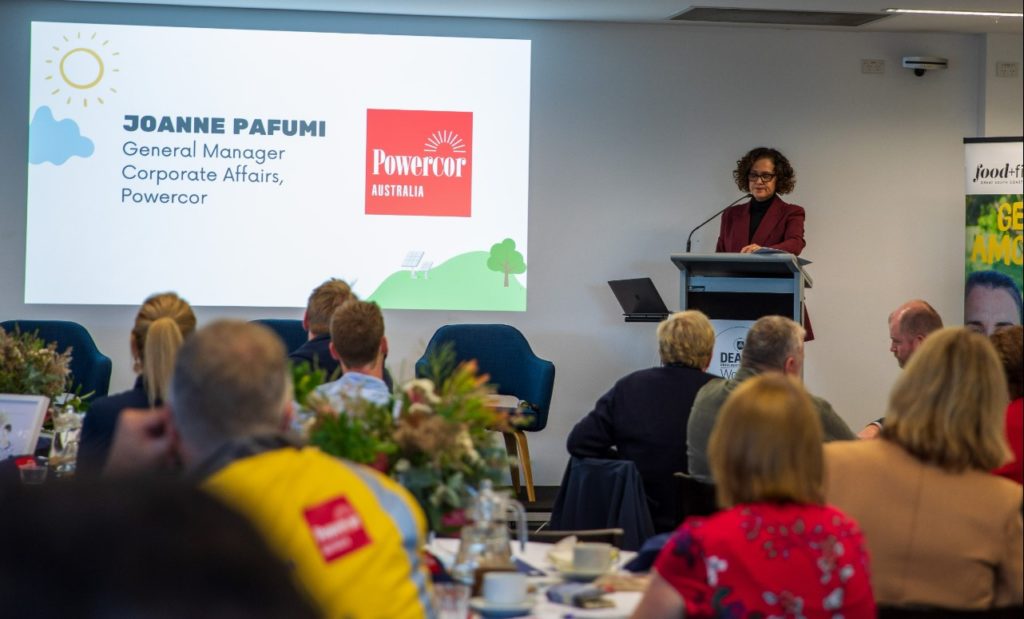
The muster truck and the aerial asset inspection services provided by our helicopter fleet are an important part of our efforts to build a network resilient to whatever mother nature can throw at it.
And we know there is going to be demand for what it can do.
After two big, one in 100-year storms last year that wreaked carnage across the Powercor region, the concept of Network Resilience came into sharp focus.
We recognise that climate change is generating more extreme storms and wind events. During a severe storm in January this year, we recorded 500,000 lightning strikes within the Powercor region over a 3-day event which affected power supplies for around 400,000 customers.
We’re also seeing longer bushfire seasons. Last summer, the fire season declarations in Powercor ranged from a minimum of 13 weeks to a maximum of 20 weeks or 5 months in some Shires.
The CSIRO Climate Futures Framework suggests flooding events are about twice as likely to occur by 2030 and we’ve seen the devastating results of this trend already in New South Wales.
As an essential service relying on more than 90,000 kilometres of powerlines supported by almost 600,000 power poles and other above ground infrastructure we monitor climatic conditions very closely.
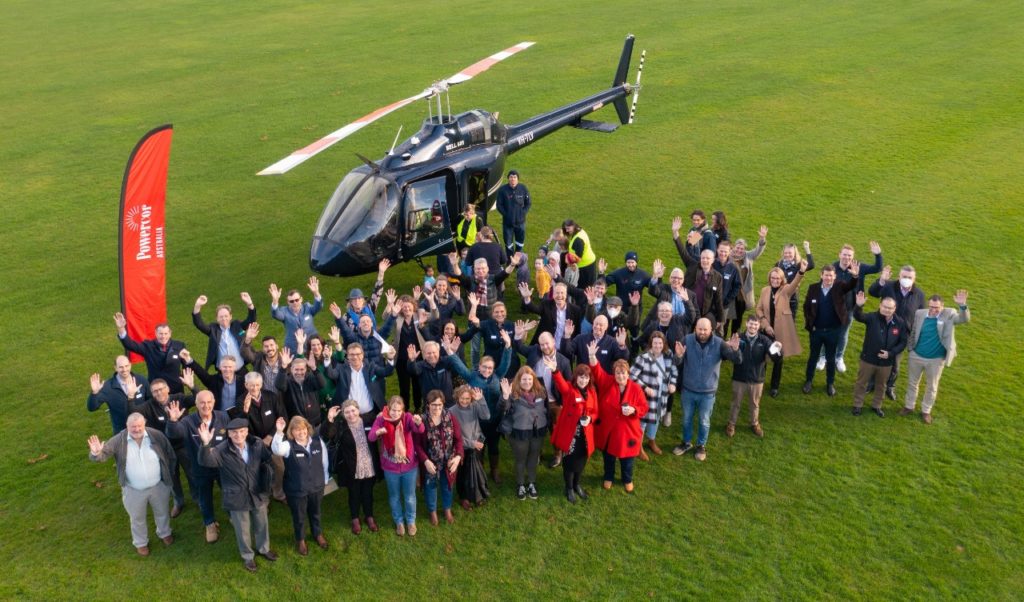
Because all the types of events I just described have the potential to lead to extended power outages for customers. And we know, this affects the ability of communities to recover.
So how we prepare, respond, and recover from major events is a critical focus of our operational planning.
While it is unrealistic to think that we will be able to prevent the full impact of climate change on our network, we are doing what we can on two main fronts.
First is to minimise the number of customers who are impacted by these events and the disruption they cause.
Second is to reduce the duration of any power outages caused by these events.
To achieve this, we rely on our crews, like those people based here in our Warrnambool depot, supported by an enormous range of technology.
Rapid Earth Fault Current Limiters are big network safety switches to prevent fire starts from our assets and are helping keep communities safer.
We’re now nearing the end of their 7-year roll out in what has been one of the most technically complex changes to the electricity industry.
In this region, REFCLs are now working in Koroit, Terang and Hamilton.
Other investments are being made in safety switches, covered conductors, undergrounding assets in high bushfire risk areas, new drone inspection capabilities.
They are all designed to prevent impacts from extreme weather.
In addition, major projects like our pole replacement program are an important part of this preparation.
This program is increasing the number of power poles we replace or reinforce each year by 65% to 7,000 across the whole Powercor region.
This is about making our network more resilient to extreme weather.
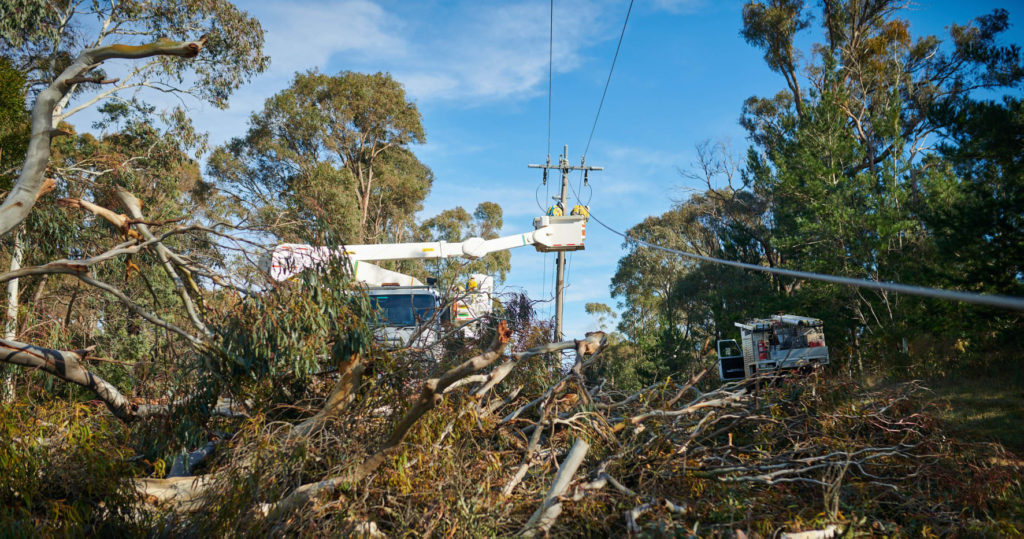
Last month, the final report from the Victorian Government’s Electricity Distribution Network Resilience Review was released. This review was initiated after last year’s storms and has resulted in a large number of recommendations that we are currently working through with government.
Among them though is the importance of getting the right information to people affected by power outages so they can make decisions on what to do next.
This is vital for recovery.
The muster truck is the first of three we are planning to rollout so that we have a visible presence on the ground to provide this type of information to community members.
This is in addition to other channels we use like radio, newspapers, SMS and websites. Because we recognise that people’s mobile coverage and laptop batteries are the first things to go though when extended power outages occur.
In affect, by strengthening network resilience, we are working to deliver a more sustainable energy future for the communities we service.
But the real focus today I know, is another form of sustainable energy. That is, the transition to renewables.
To this end, we have a number of roles to play.
First – as the owners and operators of the infrastructure that is the gateway for all forms of renewable energy to be transported to consumers.
Second – as responsible corporate citizens that have made our own commitment to emissions reduction.
Third – as an advocate for consumer interests to make sure all customers benefit from the transition to more renewables.
I’d like to just speak a little more about each of these roles.
There’s a catch cry going around the energy industry at the moment that there is ‘no transition without transmission’.
The key focus of state and federal governments and AEMO in fact, has been on how the nation can spend $20 billion to develop more high voltage transmission lines across the country to connect renewable energy generation to the national grid. This is the foundation of the AEMO Integrated System Plan and the federal government’s Rewiring the Nation initiative.
We fully acknowledge there is an essential role transmission plays in an efficient and reliable electricity market.
But this focus has to date, been at the expense of also considering a faster and more agile option.
That is, to connect large-scale renewable energy to the distribution network directly.
In 2020, 27% of energy generated in Victoria came from renewable sources. In the ten years to 2030 this is forecast to almost double to 50%.
With this speed of change, we believe that every lever will need to be pulled to enable cleaner energy.
We also believe distribution network connections are an opportunity to bring greater direct benefits to regional communities.
The region serviced by Powercor features four of the six declared Renewable Energy Zones in Victoria.
To date, there are almost 50 large scale solar and wind farms representing a total of 1.3 gigawatts of installed capacity already connected directly to Powercor’s 66 kilovolt network.
These typically range in size from 1 megawatt to 150 megawatt generation facilities.
This form of connection is faster, more agile and lower cost than a transmission network connection.
For example, the application process for distribution connections takes on average, around 6 months, compared to up to 2 years for transmission connections.
Importantly for many communities, it is also lower impact with connections being able to utilise existing infrastructure and easements.
Distribution network projects can therefore often be completed in 12 months or less.
Most significantly, the potential flow on benefits of these types of connections for localised communities are great.
- Increasing network capacity
- supporting community energy projects
- coordinating with electric vehicle charging stations
- and improving power reliability and quality are all possibilities.
And when coordinated with local energy storage or neighbourhood batteries, it all helps keep locally generated renewable energy local.

This is where it helps our second objective. To reduce carbon emissions from our network.
Recently, the Victorian Government’s Interim Targets Independent Expert Panel released a paper that indicated the energy sector accounted for approximately 64 million tonnes of carbon emissions in 2019. This equated to 70% of overall emissions in the state.
Our businesses report on carbon emissions through the annual National Greenhouse and Energy Reporting Scheme. In 2019, our three distribution networks, CitiPower, Powercor and United Energy reported carbon emissions of less than 2 million tonnes. This is equivalent to just 2.5% of the state’s energy sector emissions.
The majority of these carbon emissions, some 90%, are accounted for as distribution line losses.
This is the energy lost as heat through the network. It is a function of the type of energy distributed, so whether renewable or not, as well as factors like the distance the electricity travels between the generation source and customers.
Our theory is that if we can support renewable energy to be utilised closer to the source, then we can help reduce distributed line losses.
In Powercor, we are already seeing a significant reduction in carbon emissions over the past five years as household solar uptake escalates. Around 1 in 4 homes in the Powercor region have connected rooftop solar and with a dedicated program to enable more network capacity, more than 95% of new solar connections are able to export the full 5kW desired.
We have committed to achieve a 30% reduction in carbon emissions from our networks by 2030 compared to 2019 levels.
This target is captured in our inaugural Sustainability Framework which was launched in May this year. I have copies available of this document for anyone who would like to see more detail.
In other initiatives, we’re reducing the environmental impact of our operations through network efficiency, environmental protection, recycling and adopting Zero Emissions Vehicles.
But our real confidence in our 30% target stems from the continued uptake of rooftop solar by households as well as commercial and industrial customers, as well as the growing levels of inquiries for large-scale renewable connections.
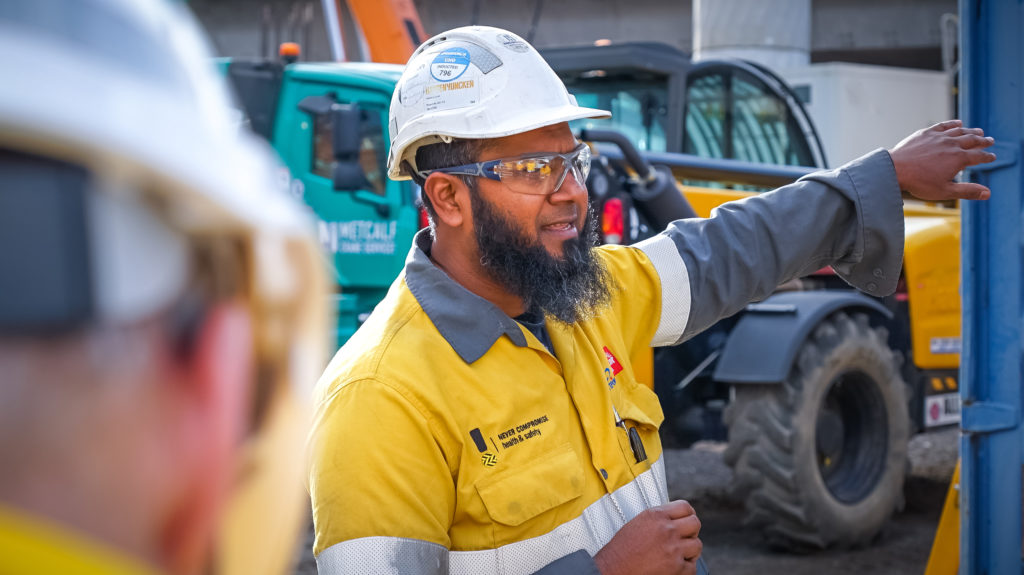
Which brings me to the final point today.
That is, all of this is dependent on consumer choices.
The latest Energy Consumer Sentiment Survey released by Energy Consumers Australia last week found consumers are pretty unimpressed by the way the energy market is functioning at present and are deeply sceptical about whether things are going to get better any time soon.
Just 40% of Australians have confidence that the overall energy market is acting in their long-term interests, down from 46% at the same time last year.
Given recent issues, affordability is the greatest concern.
However, as observed by the CEO, Lynne Gallagher, the results send strong warning signals to anyone who is working to advance our progress towards a net zero future energy system as well.
She said that to get that better future, we need consumers to be:
- embracing new opportunities and responsibilities
- investing in new technology
- making changes to how and when they use some energy
- and making their own energy available to help themselves, their neighbours and the system itself.
All of this requires a strong social licence from the community.
The ECA is also concerned that in the rush to net zero and a clean energy future, there are some customers who are potentially being left behind.
Energy equity and fairness have become key issues associated with the energy transition.
Equity issues stem primarily from the difficulty in delivering benefits to those who don’t have access to solar either because they lack the means, a suitable roof or live in apartments or rental properties.
For our part, we believe all customers should have equal opportunity to benefit from the market changes and opportunities irrespective of their level of active participation.
As a regulated business, our revenue allowance informs the network tariffs we are able to recover from customers.
These are just one of the components of a typical electricity bill received by every customer.
So with all our customers contributing, we have a responsibility to ensure there is fair and equal access to network services.
And there is the potential for all customers to see benefits in the reliability, quality and cost of power supplies as well as the opportunity to utilise more renewable energy.
To explore this further, we took a unique approach to ensuring we can quantify what our customers value the most.
In an industry first, we conducted research with almost 3,000 household and business customers asking them to quantify the value they place on further network improvements in a range of areas including environmental outcomes.
In effect, we asked – how much would you be willing to pay on top of your current energy bills in order to receive improved services based on various areas of network investment?
What we found was customers see the electricity network as increasingly critical to their lives and are willing to pay more for improvements that are important to them.
The top 3 priorities for customers may surprise you.
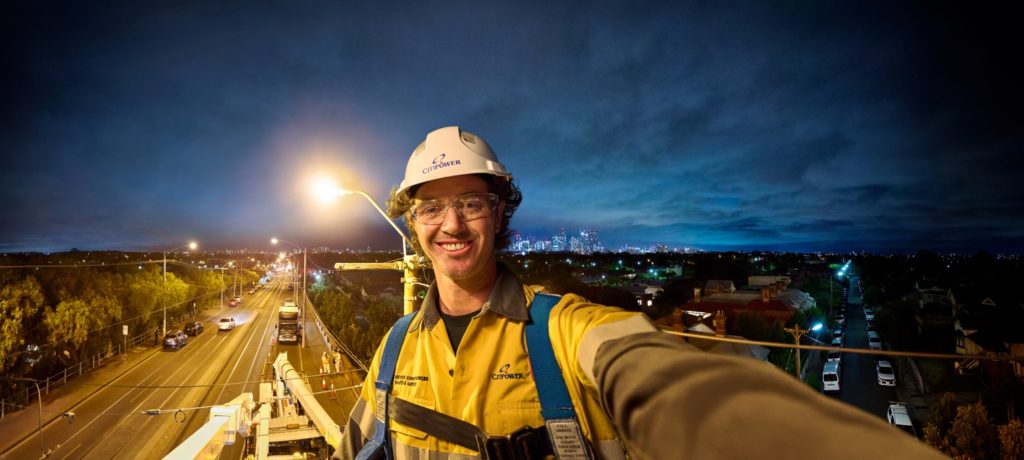
Number 1 – was increased investment in reliability.
Number 2 – investment to support carbon emissions reduction.
Number 3 – investment to build network resilience to climate change.
Our customers are choosing to pay more for these services to be delivered.
All are directly relevant to sustainable energy.
This research was ground-breaking as there are currently very few quantitative measures of customer value relevant to the various services networks provide customers. The value of reliability being one of them.
Now we have evidence to say customers would be willing to pay an additional $9.50 on their energy bills each year to support investment in carbon emissions reduction.
Now we have evidence to say customers believe everyone in their community should have access to a minimum standard of good reliability.
And Powercor customers specifically, were more willing to pay for improvements to reliability in communities outside of their own.
This type of evidence is important for a reason the Food and Fibre Council and its members knows all too well.
That is, the fact that the Australian Energy Regulator assesses our investment proposals through an economic lens and does not directly factor in the intrinsic value customers place on our services and expenditure.
In 2019, we worked closely with the south-west community to develop a proposal for a three-phase network upgrade that we know would have delivered broad social and economic benefits to the region.
This proposal was not supported by the AER.
Learning from this experience, initiatives like the Customer Values Research have become an important part of our advocacy program with regulators.
We believe that as the energy transition continues and customer participation in the market grows, the regulatory assessment framework should be reviewed and updated to keep pace with changing expectations.
We have shared our research and data with the AER and will continue engaging with them.
We were buoyed in June when the AER released a final guideline about distributed energy resource integration which for the first time, supports benefits derived from willingness to pay studies like our Customer Values research.
It is an important step forward.
We are now ramping up our work on our next regulatory reset proposal for the 2026-2031 period.
How we act on the feedback received from customers about their priorities for investment is a central part of this planning.
As is our commitment to long-term sustainable development:
- Providing safe and equitable workplaces
- Environmental and climate resilience and
- Empowering communities.
So in summary, today you’ve seen and heard about just some of the initiatives we are taking in order to support sustainable energy.
For us, it means:
- Building a network which is resilient to the impacts of climate change and is supported by the ability to prepare, respond and recover to minimise the customer impacts of likely extreme weather events.
- Enabling customers – whether it is large-scale renewable generators or households with rooftop solar and an electric vehicle – to connect to our network, export and share excess energy
- Reducing carbon emissions from our networks, mainly by supporting greater renewable sources but also through our own operational action
- Advocating for the interests of all our customers to make sure there is fair and equal opportunity to benefit from the transformation of the National Electricity Market.
After all, it is our regulated infrastructure that essentially forms a crucial gateway for our customer to a clean energy future.
Thank you.







